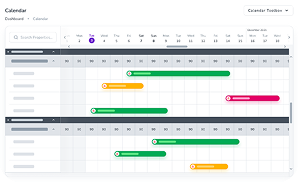Stripe vs PayPal
This article examines Stripe vs PayPal by concentrating on the main features that a payment processing tool should offer. The data has been collected from Stripe’s and PayPal’s websites and help articles. We also checked their reviews at Capterra to find the aspects that the actual users are emphasising.
User Review
In Capterra, Stripe has a rating of 4.7, with the highest score for Features.
Trustpilot introduces Stripe as an Average tool with a 3.3 TrustScore.
In Capterra, PayPal has a rating of 4.7, with the highest score for Ease of Use.
Trustpilot introduces PayPal as a Bad tool with a 1.3 TrustScore.
Secure Payment
Stripe holds the highest possible level of PCI certification in the payments industry, which is PCI Service Provider Level 1.
Stripe implements the use of HTTPS and TLS (SSL) to guarantee the security of all its services, including its public website and dashboard. The company frequently evaluates its implementation, including the certificates provided, the certificate authorities utilised, and the ciphers supported.
Additionally, Stripe uses HSTS to make certain that all browser interactions with their platform are conducted through HTTPS. Stripe is recognised and included in the HSTS preloaded lists of both Google Chrome and Mozilla Firefox.
In Stripe, all credit card numbers are securely encrypted using AES-256 encryption. The decryption keys are kept on separate computers to ensure the safety of the information. The internal servers and processes used by Stripe cannot access unencrypted card numbers, but they are authorised to send the card information to selected service providers. The infrastructure used by Stripe to handle, decrypt and transmit credit card numbers operates within a standalone hosting environment and does not share any credentials with the primary services of Stripe, such as their API and website.
3D Secure
Stripe supports 3D Secure 2 to increase security against fraud. If a payment is verified through 3D Secure (3DS), the responsibility for any fraud disputes is transferred from the merchant to the card issuer. These disputes are managed internally by Stripe and do not appear on the dashboard or result in funds being taken from the merchant’s account.
Stripe automatically activates 3DS if it is mandated by regulations, such as Strong Customer Authentication. Alternatively, you can use the API or Radar rules to decide when to prompt customers for 3DS verification. So, you can decide for each individual user based on set criteria.
Fraud Detection
Stripe Radar offers instant protection against fraud. Radar uses machine learning, trained on vast data from numerous worldwide businesses, to identify and stop fraud. Its algorithms swiftly adjust to changing fraud patterns.
As a PCI DSS compliant service provider, PayPal must follow the security requirements set forth by the PCI Security Standards Council. Those include maintaining secure networks, protecting cardholder data, maintaining a vulnerability management program, implementing strong access control measures, regularly monitoring and testing its systems, and maintaining an information security policy.
3D Secure
The 3D Secure authentication process is carried out only if the card has been enrolled for the service. If your guest enters their card information on your website for payment processing, you can choose to activate 3D Secure. If activated, the guest’s card-issuing bank will prompt them to complete an extra verification step that involves entering either a one-time or static password, based on how the implementation has been set up.
Fraud Detection
PayPal monitors all transactions round the clock to prevent fraud, email phishing, and identity theft. They implement advanced encryption to secure every transaction. If anything appears suspicious, their specialised security team will recognise and intercept any dubious activity to safeguard you against fraudulent transactions.
Reporting
Stripe’s financial reports help you in tracking and reconciling account activity. The reports can be viewed as a summary in the dashboard or as a detailed and downloadable CSV file of transaction data.
To access and create custom reports for your Stripe data, you have two options: Stripe Sigma or Stripe Data Pipeline.
Sigma is for accessing the data within the Stripe dashboard, while Data Pipeline is for centralising your Stripe data with business data in Snowflake or Amazon Redshift.
PayPal reports provide you with detailed information on transactions, which can assist you in your daily operations. These reports are updated on a daily basis, enabling you to:
- Reconcile and manage revenue.
- Review activity details.
- Manage dispute cases and chargebacks.
Online Reports
By logging into your PayPal account, you can see the following reports:
- Statements
- Activity download
- Financial summaries
- Disputes and chargebacks
- Transactions
- User audit
- Advanced reports
SFTP Reports
You need to set up your SFTP account to access the following SFTP reports:
- Case report
- Case report ACM
- Dispute detail custom
- Order report
- Pre-approved payments agreement
- Recurring payments profile
- Revenue share
- Settlement
- Subscription agreement
- Transaction details
Recurring/Subscription Billing
Stripe handles recurring charges for you automatically. This includes:
- Invoicing customers and attempting payments automatically when billing cycles begin.
- Using the Smart Retries feature to automatically retry failed payments based on dashboard settings if the card is declined.
To increase recovery of overdue payments, you can send a dunning email to customers. If a payment requires 3D Secure, you can set up your billing settings to send a link for customers to complete the process.
You can use the recurring payments dashboard to manage payments for subscription payments and automatic billing payments.
The Recurring payments dashboard has two sections:
- Overview: In this part, you can find quick links that let you promptly modify the dashboard list according to the status value indicated in the link. Furthermore, each shortcut link shows the number of plans that are associated with that particular status value.
- My customers: In this section, you can view a list of recurring payment plans. The list displays all billing plans by default, but it can be filtered to present only the plans of your preference.
The subscription details page allows you to:
- Modify the subscription details.
- Cancel the subscription.
- Suspend the subscription.
- Reactivate a suspended subscription.
- View the subscription’s history.
The automatic billing details page allows you to:
- Cancel the automatic billing plan.
- Click Bill Now to collect a payment from the customer for the current month.
Refunds and Chargebacks
Stripe allows you to refund any successful payment partially or in full. The refund request is sent to the customer’s bank or card issuer, and the refund will be reflected on the customer’s bank statements in real-time, subject to the card network and issuing bank. Once issued, refunds cannot be cancelled.
Stripe will send an email notification to the customer about the refund only if the following conditions are met:
- The initial charge was made to a customer in your Stripe account.
- The customer’s email address is stored.
- The “Email customers for refunds” option is enabled in the dashboard.
Refunds can be processed through the Refunds API or the dashboard. Multiple refunds can be issued for a single charge, but the total refund amount must not exceed the original charge amount.
Refunds can only be returned to the original payment method. It is not possible to refund to a different destination, such as a different card or bank account.
Customers can initiate chargebacks 180 days or more following the placement of an order. In the event that you receive a chargeback, you will have 10 days to respond to it. Typically, chargebacks are resolved within a few weeks, although there may be circumstances where they can take 75 days or even more to be resolved.
PayPal will impose a charge (determined by the currency received) on you in the event that a customer files a chargeback with their credit card provider. However, if the transaction is protected by the Seller Protection Policy, PayPal will cover the cost and waive the chargeback fee.
Accounting
Stripe integrates with several popular accounting software, such as QuickBooks, Xero, and Zoho Books. This integration allows merchants to easily import their financial data from Stripe into their accounting software for more efficient bookkeeping and financial management.
PayPal integrates with various accounting software, such as QuickBooks and Xero, allowing users to import PayPal transactions into their accounting software and automate the bookkeeping process.
Pricing
Stripe offers a simple and straightforward pricing scheme. It has no setup or monthly fees. Pricing fees are different based on the location:
- For European Economic Area cards: 1.4% + £0.22 (+1.1% for UK cards)
- For international cards: 2.9% + £0.22
It also offers a custom package, available for businesses with large payments volume, high-value transactions, or unique business models.
PayPal offers different types of merchant accounts.
- Standard account: 2.9% + $0.30 per transaction
- Advanced account: 2.5% + $0.30 per transaction
- Pro account: 2.2% + $0.30 per transaction
It’s important to note that these fees may vary based on the merchant’s country and currency. Additionally, merchants who receive payments in a currency other than their own may be subject to additional fees for currency conversion.
In addition to transaction fees, PayPal may also charge additional fees for certain services. For example, merchants who use PayPal to issue refunds may be subject to a fee equal to the original transaction fee. Merchants who receive chargebacks (disputed payments) may also be subject to a fee.
Stripe vs PayPal: Which Payment Processing Tool to Choose?
Stripe and PayPal are two popular payment processing tools businesses can use to accept online payments. Both tools offer a variety of features and benefits, and the best choice for your business will depend on your specific needs and preferences.
Stripe offers more customisation options, allowing businesses to match their brand and design preferences more easily. Stripe is known for its developer-friendly APIs, while PayPal is often preferred for its simplicity and user-friendly interface. PayPal has strong international capabilities, with support for over 200 countries and a variety of currencies.
In general, Stripe is a good choice for businesses that prioritise customisation, flexibility, and support for a wide range of payment methods. PayPal is a good choice for businesses that prioritise international transactions and those looking for simplicity and ease of use.
We are committed to ensuring that all our comparison articles are factually entirely correct and accurate. If you have spotted anything that you feel is wrong or misleading in this article, we’d appreciate hearing from you.

